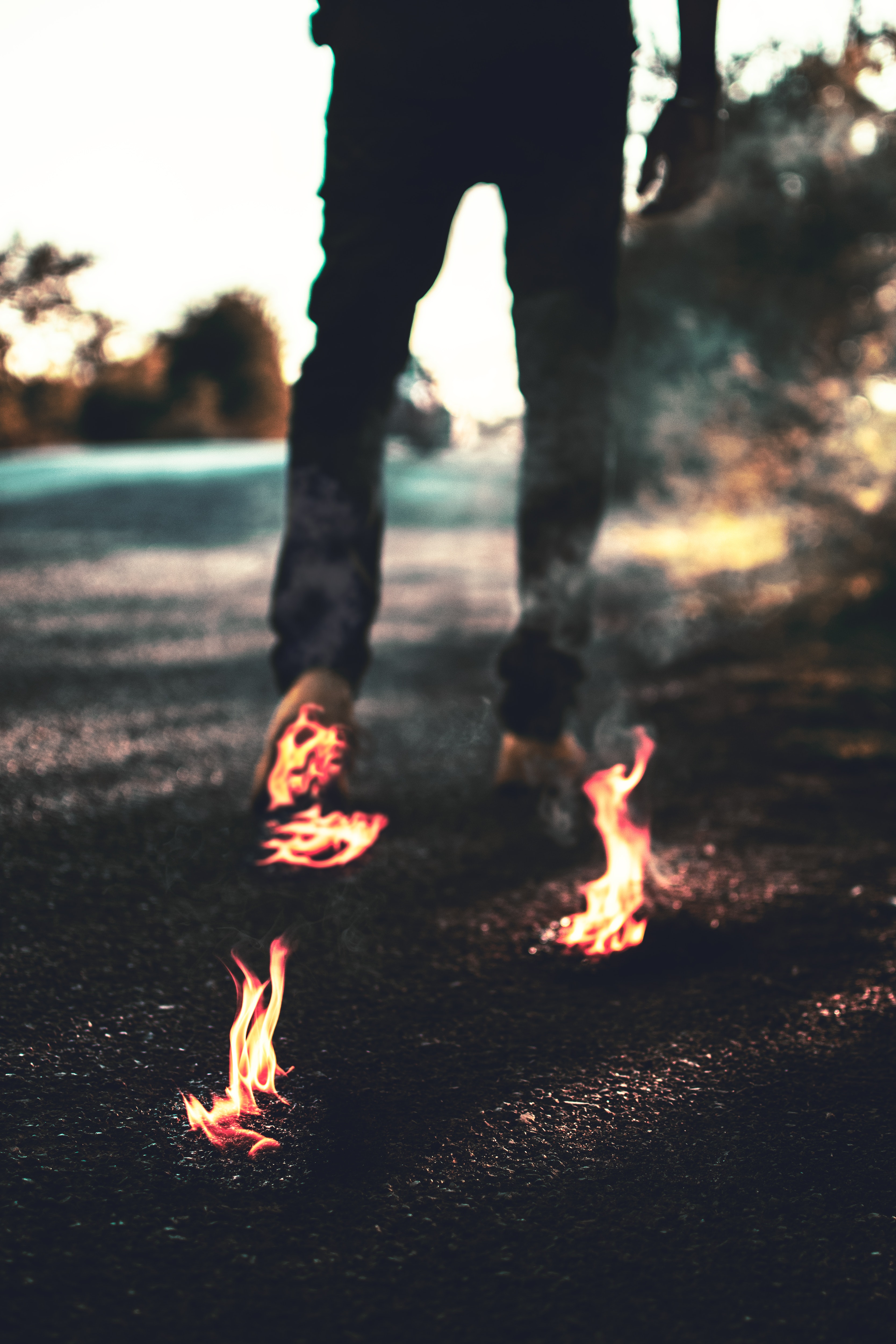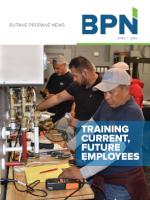Wednesday, April 15, 2020
By Dave Emanuel…
Do you bet your life when you go to work each day? That may be exactly what you’re doing if your work involves handling propane, or simply being in a propane-rich environment. According to Derek Sang of Bulwark Protective Apparel, “For some reason, the propane industry has been reluctant to use flame-resistant [FR] clothing in day-to-day operations even though they [may] have similar thermal hazards as say refineries or oil and gas drillers where the use of FR clothing is mandated.”
 INJURIES FROM FLAMMABLE CLOTHING
INJURIES FROM FLAMMABLE CLOTHING
Sang explains, “What people don’t realize is that serious burn injuries (more than 50% body burn) that can and do lead to fatality are not because of the flash fire itself, but because of clothing that is not flame-resistant, catching fire and continuing to burn. Clothing that has flame-resistant properties has the ability to extinguish itself and therefore minimize those burn injuries and dramatically increase survivability.”
Employers should be aware that the Occupational Safety and Health Administration (OSHA) requires training on the proper selection, use, care, and maintenance of personal protective equipment (PPE)—even if employees provide their own equipment. Specifically, OSHA regulations specify, “Application. Protective equipment, including personal protective equipment for eyes, face, head, and extremities, protective clothing, respiratory devices, and protective shields and barriers, shall be provided, used, and maintained in a sanitary and reliable condition wherever it is necessary by reason of hazards of processes or environment, chemical hazards, radiological hazards, or mechanical irritants encountered in a manner capable of causing injury or impairment in the function of any part of the body through absorption, inhalation or physical contact.”
Beyond that, the regulations state, “Employee-owned equipment. Where employees provide their own protective equipment, the employer shall be responsible to assure its adequacy, including proper maintenance, and sanitation of such equipment.”
In spite of OSHA regulations and National Fire Protection Association (NFPA) standards for flame-resistant garments, Sang notes that a great deal of misleading and inaccurate information abounds. This creates an abundance of problems, beginning with the selection of the proper garments. The “thermal events,” associated with propane handling and storage are typically short-duration flash fires: “A fire that spreads by means of a flame front rapidly through a diffuse fuel, such as dust, gas, or the vapors of an ignitable liquid, without the production of damaging pressure” (NFPA 2013-2020). Consequently, the appropriate flame-resistant clothing should be compliant to the NFPA 2112-18 Standard on Flame-Resistant Garments for Protection of Industrial Personnel Against Short Duration Thermal Exposure from Fire.
INTENTIONAL LACK OF USE
While it may seem obvious that having flame-resistant clothing is of no use if the clothing isn’t worn, intentional lack of use is a problem—a problem that exists across the entire personal protection landscape. Whether it’s a hard hat, steel-toe shoes, eye protection, hearing protection, or flame-resistant clothing, all too often, protective equipment is not worn when it should be in day-to-day operations.
Through his seminars, which he does throughout the world, Sang shares information that is needed to enable both workers and management to select and maintain the proper clothing that may well save their lives.
(Photo credit: Ashutosh Sonwani, April 15, 2020)
Do you bet your life when you go to work each day? That may be exactly what you’re doing if your work involves handling propane, or simply being in a propane-rich environment. According to Derek Sang of Bulwark Protective Apparel, “For some reason, the propane industry has been reluctant to use flame-resistant [FR] clothing in day-to-day operations even though they [may] have similar thermal hazards as say refineries or oil and gas drillers where the use of FR clothing is mandated.”
 INJURIES FROM FLAMMABLE CLOTHING
INJURIES FROM FLAMMABLE CLOTHINGSang explains, “What people don’t realize is that serious burn injuries (more than 50% body burn) that can and do lead to fatality are not because of the flash fire itself, but because of clothing that is not flame-resistant, catching fire and continuing to burn. Clothing that has flame-resistant properties has the ability to extinguish itself and therefore minimize those burn injuries and dramatically increase survivability.”
Employers should be aware that the Occupational Safety and Health Administration (OSHA) requires training on the proper selection, use, care, and maintenance of personal protective equipment (PPE)—even if employees provide their own equipment. Specifically, OSHA regulations specify, “Application. Protective equipment, including personal protective equipment for eyes, face, head, and extremities, protective clothing, respiratory devices, and protective shields and barriers, shall be provided, used, and maintained in a sanitary and reliable condition wherever it is necessary by reason of hazards of processes or environment, chemical hazards, radiological hazards, or mechanical irritants encountered in a manner capable of causing injury or impairment in the function of any part of the body through absorption, inhalation or physical contact.”
Beyond that, the regulations state, “Employee-owned equipment. Where employees provide their own protective equipment, the employer shall be responsible to assure its adequacy, including proper maintenance, and sanitation of such equipment.”
In spite of OSHA regulations and National Fire Protection Association (NFPA) standards for flame-resistant garments, Sang notes that a great deal of misleading and inaccurate information abounds. This creates an abundance of problems, beginning with the selection of the proper garments. The “thermal events,” associated with propane handling and storage are typically short-duration flash fires: “A fire that spreads by means of a flame front rapidly through a diffuse fuel, such as dust, gas, or the vapors of an ignitable liquid, without the production of damaging pressure” (NFPA 2013-2020). Consequently, the appropriate flame-resistant clothing should be compliant to the NFPA 2112-18 Standard on Flame-Resistant Garments for Protection of Industrial Personnel Against Short Duration Thermal Exposure from Fire.
INTENTIONAL LACK OF USE
While it may seem obvious that having flame-resistant clothing is of no use if the clothing isn’t worn, intentional lack of use is a problem—a problem that exists across the entire personal protection landscape. Whether it’s a hard hat, steel-toe shoes, eye protection, hearing protection, or flame-resistant clothing, all too often, protective equipment is not worn when it should be in day-to-day operations.
Through his seminars, which he does throughout the world, Sang shares information that is needed to enable both workers and management to select and maintain the proper clothing that may well save their lives.
(Photo credit: Ashutosh Sonwani, April 15, 2020)




